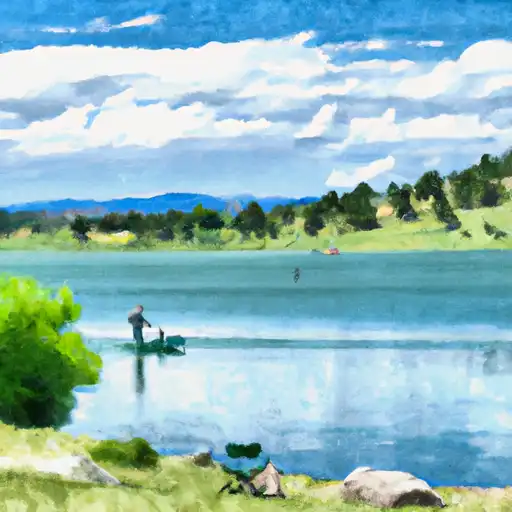Summary
The area is known for its abundance of rainbow trout, cutthroat trout, and brook trout. Fishing is permitted year-round, with the best fishing months being from April to October.
In addition to fishing, visitors can enjoy hiking in the nearby San Isabel National Forest or take a scenic drive along the Collegiate Peaks Scenic Byway. The average temperature in the summer months (June-August) is around 70°F, making it a comfortable time to visit.
Fishing tips for Chalk Lake include using small lures or flies and fishing from a canoe or kayak for the best results. Fishing in the early morning or late evening can also increase the chances of catching fish.
Overall, Chalk Lake Fishing Site is an excellent location for anglers looking to catch rainbow, cutthroat, or brook trout while enjoying the scenic beauty of the San Isabel National Forest.
Weather Forecast
Nearby Streamflow Levels
Angling Safety Guidelines
Check local fishing rules, seasons, size limits, and license requirements to ensure legal and sustainable angling.
Handle Fish Responsibly
Use wet hands, minimize air exposure, and release fish gently to improve survival rates when practicing catch-and-release.
Choose the Right Gear
Match your rod, line, and tackle to the species and conditions to increase success and reduce unnecessary harm to fish.
Respect the Waterway
Avoid disturbing habitat, prevent bank erosion, and keep a safe distance from spawning areas to protect ecosystems.
Keep It Clean
Pack out all line, hooks, bait containers, and trash—discarded gear can injure wildlife and degrade waterways.
Related Links
Area Campgrounds
| Location | Reservations | Toilets |
|---|---|---|
 Chalk Lake Campground
Chalk Lake Campground
|
||
 Chalk Lake
Chalk Lake
|
||
 Cascade
Cascade
|
||
 Mount Princeton Campground
Mount Princeton Campground
|
||
 Mount Princeton
Mount Princeton
|
||
 Iron City Campground
Iron City Campground
|

 Baldwin Lake
Baldwin Lake
 Cottonwood Lake (Buena Vista)
Cottonwood Lake (Buena Vista)
 Cottonwood Lake
Cottonwood Lake
 Mirror Lake (Almont)
Mirror Lake (Almont)






 Cottonwood Lake
Cottonwood Lake
 AHRA - Fishermans Bridge Rec Site
AHRA - Fishermans Bridge Rec Site
 AHRA - Ruby Mountain Rec Sits
AHRA - Ruby Mountain Rec Sits
 CR 300 22504, Nathrop
CR 300 22504, Nathrop
 AHRA - Hecla Junction Rec Site
AHRA - Hecla Junction Rec Site
 AHRA - Stone Bridge Rec Site
AHRA - Stone Bridge Rec Site